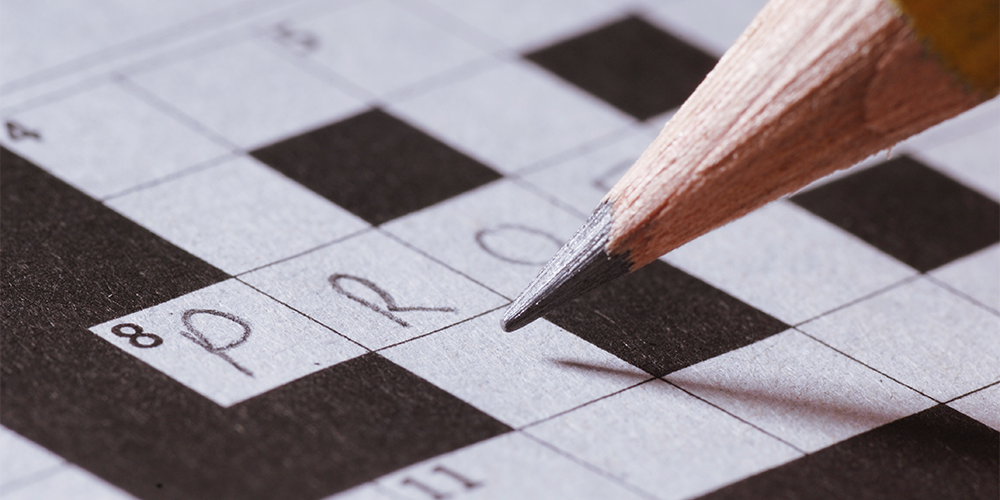I love a good crossword puzzle. While I’ve done word puzzles my whole life (thank you, Scrabble!), I’ve always been a bit intimidated by the New York Times (NYT) crossword puzzle. This year, I committed to learning how to do all the days of the Times puzzle, and I’m happy to report I can do all of them without looking at hints (99% of the time). There’s a whole strategy for these puzzles, but before we get there, below are four fun facts about crossword puzzles, in honor of National Crossword Puzzle Day!
- Arthur Wynne from Liverpool, England is credited with inventing crossword puzzles.
- People who create crossword puzzles are called constructors, and those people who enjoy doing crosswords are cruciverbalists.
- The largest word ever used in a crossword puzzle is the name of a Welsh town: Llanfairpwllgwyngyllgogerychwyrndrobwllllantysiliogogogoch, brilliantly worked into this weather forecast by Liam Dutton:
- Crossword puzzles benefit mental health, vocabulary, problem-solving skills, and memory.
Educators can use crossword puzzles for many different purposes, and mastering the full week of NYT puzzles is a fantastic challenge for students. To learn how to do all the days of the NYT puzzle, below are tips I used, which could encourage students as well!
- There is help. The NYT wants you to do their crosswords, so they do a few things to provide support: a guide, the NYT Wordplay column, and a section in the column called “Tricky Clues.” If you don’t want to know answers, they even provide “Spoiler Alerts” when they are about to share answers.
- It’s not cheating if you are looking up answers. Looking up answers is part of the learning process. No one knows everything about every clue, but the more you complete the puzzles, the less you will rely on outside help.
- Start with Mondays. Mondays are the easiest puzzles of the week, and Saturdays are the hardest. If you can push yourself through Monday puzzles, you’ll soon begin seeking out more difficult challenges, like Tuesdays or Wednesdays. Sundays are about as difficult as a Wednesday or Thursday, but it’s always a huge grid, so it requires stamina!
- Once you learn how to complete them, skip Thursdays. When I first encountered Thursdays, I didn’t realize the pattern of quirky elements that are included on that day. Rebuses and other tricks can be really frustrating if you’re just there to get through the puzzles. Learn how to do them (this is important), then if you don’t like them, skip them.
- There’s an app. You can download the app here, which includes Wordle, Sudoku, and the Mini. There’s a fee, but I happily pay it because it’s good for my brain. If nothing else- grab a NYT paper and head for the crosswords!
With practice, patience, and tenacity, you can encourage your students (and/or yourself!) to tackle the NYT crossword puzzle!
Not quite up to engaging students with the NYT? The resources below can be added to your list of engagement strategies!!
- Classroom Complete Press offers a Free Worksheet for National Crossword Puzzle Day
- “Crossword Puzzles: A Guide for Teachers,” from ReadWriteThink, features their own Crossword Puzzles Tool
- Discovery Education’s Puzzlemaker is a gem for creating puzzles of all kinds!
- “10+ Incredible Crossword Puzzles examples for Teachers to Use in Class,” from Book Widgets includes crosswords for science, math, and more!
Resources
“Puzzle Fun Facts,” Words With Friends






